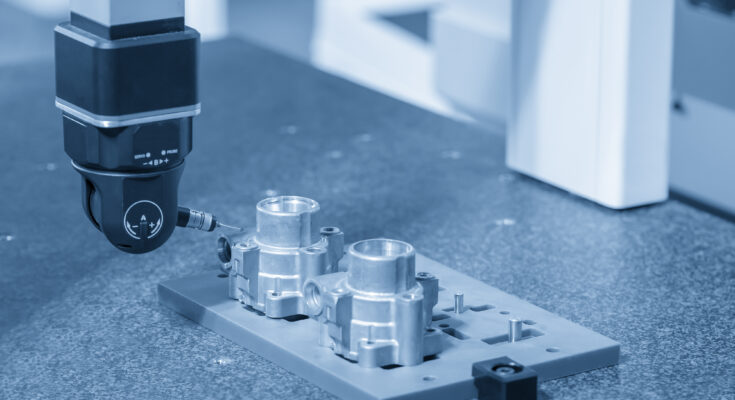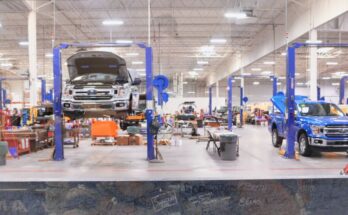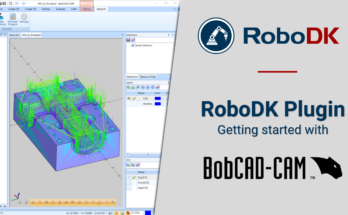Are you looking to improve your specialist multi-axis milling operations? Maybe you need to mill large turbine blades, impellers, tubes, or tire molds. You may want to improve the efficiency of your machining with hyperMILL.
hyperMILL is a CAM program designed for such specialist milling applications. It helps machinists in a range of industries to create high-precision machining paths easily and intuitively. When you combine it with RoboDK, you can achieve large-scale milling projects quickly and easily.
Like many machinists, you might be looking for a way to reduce the cost of your milling and achieve more with the same equipment. More and more these days, machinists are recognizing that robots are a powerful tool when you want to streamline your operations.
Robotic machining is the next logical step for many machining applications, particularly multi-axis milling, which is ideal for robots for reasons we outline below.
But, what if you don’t have experience with robots?
How can you integrate your hyperMILL milling project with a robot?
The RoboDK plugin makes the entire process easy.
What is hyperMILL?
HyperMILL is a Computer-Aided Machining (CAM) program developed by Open Mind, a software company based in Wessling, Germany. Open Mind has 17 subsidiaries across the world. HyperMILL is used extensively across industries, including automotive, aerospace, and energy.
The core user base for hyperMILL is machinists. The software tool can apply to many common application areas for CNC milling, such as modeling, prototyping, tool and mold making, and production. It has a wide range of features to support multi-axis milling, including collision avoidance, roughing, drilling, finishing, and many more.
Open Mind also provides a Computer-Aided Design (CAD) software, hyperCAD-S. They also targeted this at machinist and NC programmers. It makes the design process easier for these people who are less familiar with CAD programs than product designers.
Why Robotic Machining is the Next Step in Multi-Axis Milling
Despite hyperMILL’s impressive selection of features, there is one thing that it doesn’t support — robot machining.
This makes sense. One software can’t (and shouldn’t) do absolutely everything that you might need to do as a machinist. Software products that try to be “everything to everyone” often end up being less useful than specialist softwares. HyperMILL specializes in multi-axis milling, which is its area of great strength.
But, as a machinist, you can’t ignore robot machining.

Robots have some compelling benefits over conventional CNC machining. This is particularly true for multi-axis milling of large workpieces, such as propellers, turbine blades, and large tubes.
One benefit is that robots have a much larger workspace than conventional CNC machines. They are also more flexible. With a conventional CNC machine, you might have to run several milling operations — with manual changeovers in between — to achieve the same level of processing that you could achieve with one robotic operation. This ability to run multiple machining paths with the same robotic setup also makes robotic milling cheaper than with conventional machines.
What is RoboDK?
RoboDK is a highly popular, flexible robot programming software.
People use the software across an extensive range of industries and it is compatible with hundreds of robot models from dozens of manufacturers. Its intuitive interface makes RoboDK perfect for expert roboticists and new robot users alike.
RoboDK excels at robot machining. Its integrated machining wizard makes it very easy to convert your machining paths to accurate robot motions.
Introducing… the RoboDK hyperMILL Plugin
At RoboDK, we are devoted to making robot programming easy for anyone, no matter what CAD/CAM program you personally prefer to use.
Our hyperMILL plugin now brings this easy robot programming workflow to users of this powerful CAM package.
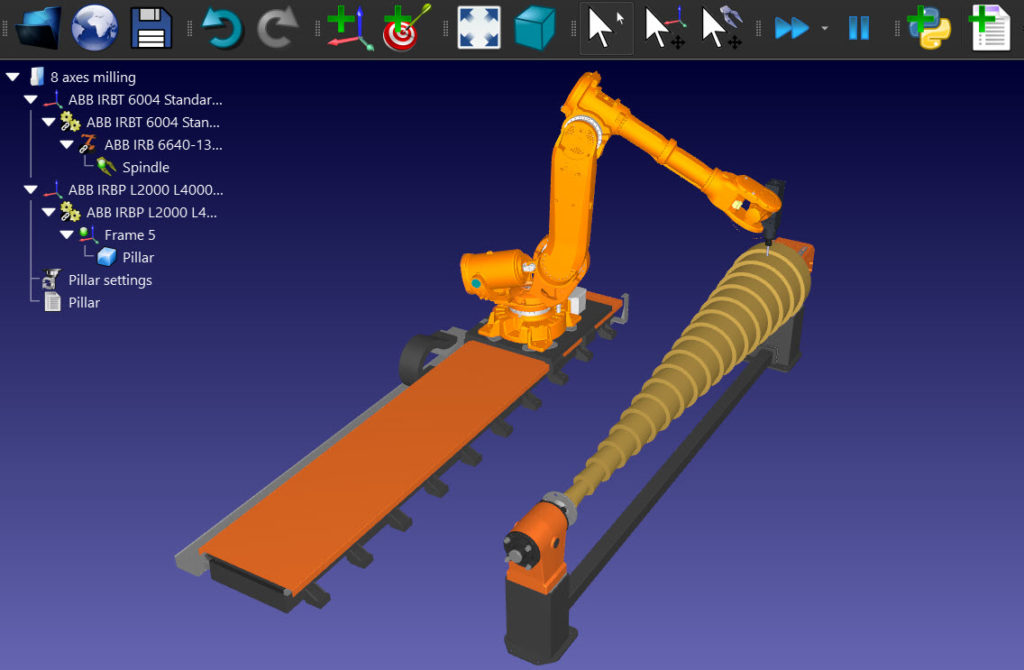
How to Access the hyperMILL Plugin
To add the RoboDK plugin to your copy of hyperMILL, simply download the plugin, as described on the documentation page and install it as an “AddIn” to hyperMILL.
Unlike with most of our other plugins, the interface doesn’t appear in hyperMILL as a new panel. Instead, it shows up in the right-click menu within hyperMILL
The hyperMILL-RoboDK Workflow
Using hyperMILL and RoboDK together is very easy.
Once you have developed your machining job in hyperMILL, you send the path to your robot with the following sequence of steps:
- Right click on your machining job.
- Select the AddIns menu.
- Select the RoboDK AddIn.
This will send your machining path to RoboDK, which will create a robot program for the robot that you have set up in RoboDK.
How Will I Know if My Machining Path is Possible with my Robot?
Within hyperMILL, it would not be immediately obvious if your programmed machining path was achievable with the robot machining.
For this reason, we’ve added a feature that includes a green check mark if the machining operation will be possible with your robot setup. If there are any issues, a red mark will appear. You can then go into RoboDK and solve the problem in its simple GUI interface.
What Types of Milling Can You Do with the Plugin?
If your particular robot setup supports your machining path, you can do almost any milling application that you can think of with RoboDK.
Of course, a robot is not always the optimal tool for all milling tasks, which is to be expected.
Some tasks would be better with a conventional CNC machine. For example, if your milling task requires nanometer accuracy or needs a very high stiffness, a conventional machine might be a better option. But many tasks are very suitable for RoboDK and robotic machining with hyperMILL.
Examples of tasks that can benefit from robotic machining are:
- Impeller and blisk milling — These rotors are used to increase pressure and flow of a fluid. They can be huge, so the large workspace of robots is very helpful.
- Turbine blades — As with impellers, turbine blades can be huge so benefit from the robot’s large workspace. Some RoboDK users also use the software for turbine blade inspection.
- Tube milling — RoboDK has already been very successfully applied to tube and pipe milling. Its flexibility really helps with the process.
- Surface milling — hyperMILL specializes in milling complex surface geometries. The flexibility of a robot helps with such geometries, as they can reach the surface from more varied angles than a conventional milling machine.
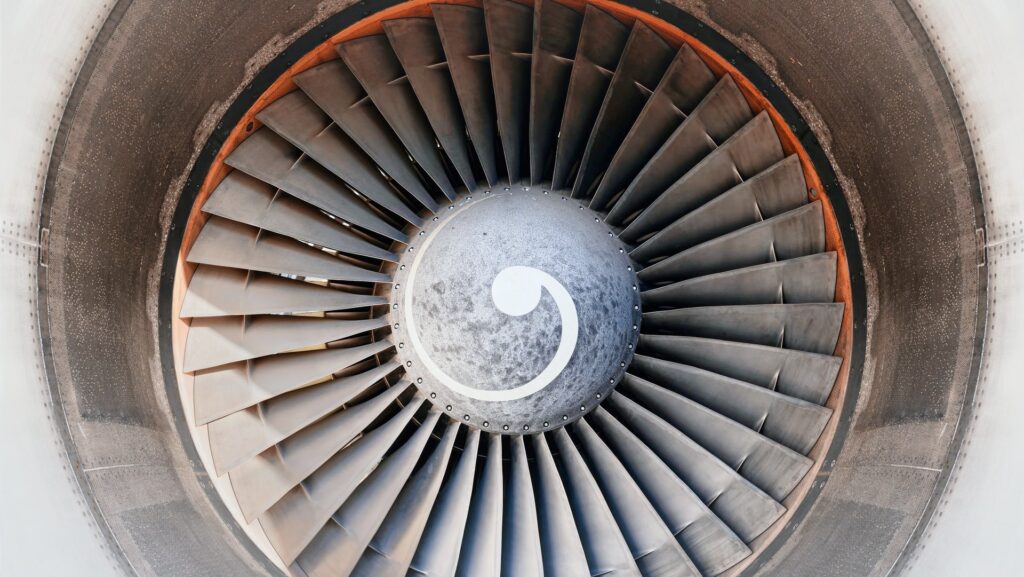
How to Start Using the hyperMILL RoboDK Plugin Today
Want to get started using hyperMILL for robot programming?
Just go to the documentation page for detailed instructions on how to install and use the RoboDK plugin for hyperMILL.
What tasks do you use hyperMILL for the most? Tell us in the comments below or join the discussion on LinkedIn, Twitter, Facebook, Instagram, or in the RoboDK Forum. Also, check out our extensive video collection and subscribe to the RoboDK YouTube Channel.

